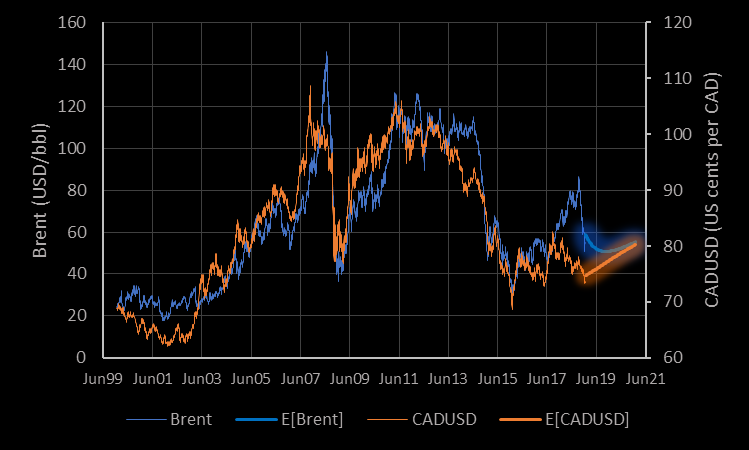Interactions Between 5Y and 10Y Treasury Yields
- Doug Huggins

- Dec 12, 2018
- 2 min read
In my last post, I noted that the empirical correlation of the change in 5Y and 10Y Treasury yields since 1962 depends on the frequency of the observations. For example, daily changes exhibited a correlation of 0.89, while monthly changes displayed a correlation of 0.94 over the same period.
While this pattern is consistent with the existences of attractive forces between the two yields, it’s also consistent with other patterns in the data, such as the existence of high-frequency noise, or perhaps a non-synchronicity in the observations. So in this post I estimate the parameters of a bivariate Ornstein-Uhlenbeck process using this data, to look for direct evidence of attractions between the two yields.
The estimated scatter matrix is consistent with an instantaneous conditional correlation between the two series of 0.89 – identical to within rounding error of the simple correlation coefficient we calculated in the previous post using daily changes.
If there were no interactions between the two series, the correlation would be the same for all observation frequencies. But as it happens, there are direct signs of attraction in the estimated parameter values.
For example, when we constrain any interactions between the two variables to be symmetric (ie, when the 5Y and 10Y yields are assumed to exert identical forces on one another), we estimate an attraction of 0.57 – consistent with a half-life of 1.2 years. To put this in context, this is greater than the forces exerted on the 5Y and 10Y yields by their means, with half-lives of 18 years and 6 years respectively. In other words, while the two yields are both weakly attracted by their means, they’re more strongly attracted to one another.
Things get even more interesting when we allow the forces to be asymmetric – ie, when we allow the force exerted on the 5Y yield by the 10Y yield to be different from the force exerted on the 10Y yield by the 5Y yield. In that case, the 5Y yield appears only weakly attracted to the 10Y yield, consistent with a half-life of 4 years. But the 10Y yield appears to have a stronger attraction to the 5Y yield, consistent with a half-life of only 9 months. (The estimated attraction of the 5Y yield to its mean is consistent with a half-life of 10 years, while the estimated attraction of the 10Y yield to its mean is consistent with a half-life of 5 years.)
So while both yields exhibit reversion toward their own means, they’re even more attracted to one another. And in particular, the 10Y yield appears strongly attracted to the 5Y yield – useful information for anyone trading the spread between the two yields.



Comments